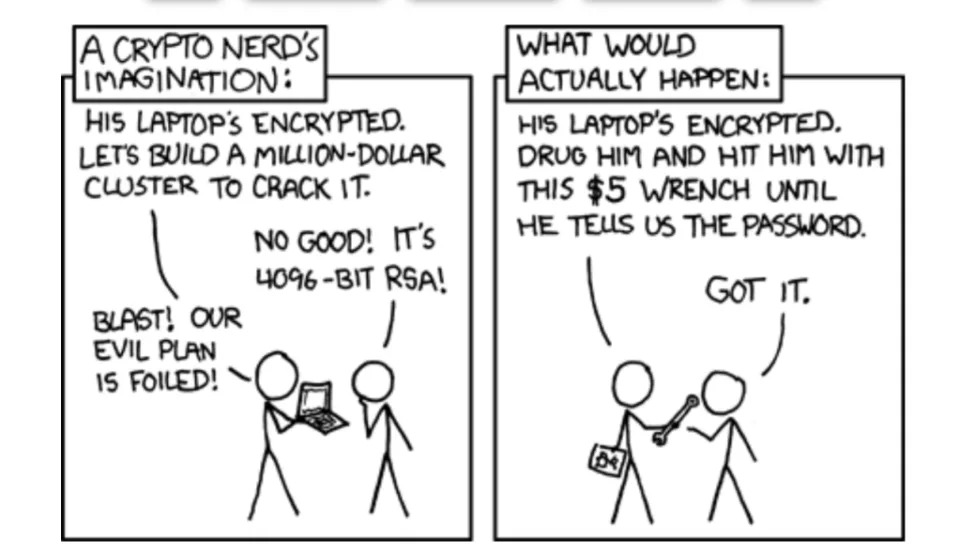Executives of the Paris-based crypto wallet firm Bitcoin and other cryptocurrency. In 2024, there were 24 such attacks. In 2025, there were eight in January alone. That's according to a running chronology maintained by Jameson Lopp, a famous early Bitcoiner, who in 2017 was attacked himself when criminals called in a SWAT raid of his home in a bid to extort him. The true number of overall violent crypto attacks is likely much higher than what Lopp has cited, given that some victims will be reluctant to report them.
The violence highlights a popular misperception about crypto. While thefts due to hacking are still widespread, blockchain technology—especially in the case of Bitcoin—is highly secure. The reality is it is nearly impossible to hack someone who has taken the right precautions. But even if a criminal can't steal crypto by means of a cyber-attack, they can do so through old-fashioned physical coercion. Such attacks are made easier because the crooks don't have to carry or transport the stolen goods, but can simply force the victim to enter a passcode and whisk their crypto fortune to an overseas wallet.
This risk of crooks using physical force to steal crypto is a long-standing concern for Lopp and others deeply enmeshed in the crypto scene. So much so that there is a common term for it: wrench attacks. The term is based on a decade-old meme, widely circulated among cybersecurity professionals, that shows crooks carrying out an expensive cyberattack only to be foiled by the laptop's sophisticated encryption. A subsequent panel shows how the crooks plan to get around this obstacle by purchasing a $5 wrench to beat the laptop owner until he gives up the password:

This, in essence, is what befell Balland, the Ledger co-founder, whose company is known in crypto industry for making highly secure hardware wallets. Investigators ultimately rescued Balland after first paying the crooks a single Bitcoin to buy time and then, in a lucky break, stopping a car being driven by others in the kidnap gang who had seized his wife. Since the plot was foiled, the crime saw Balland lose his finger but not his fortune—and it has also led to other crypto owners rushing to protect their crypto stash from violent criminals.
Wrench attack insurance
Becca Rubenfeld, a former longtime Starbucks executive who lives in Seattle, embarked on a decidedly different career in 2022. She co-founded AnchorWatch, a startup that helps Bitcoin owners not only store their digital assets, but insure them.
In November, Rubenfeld finally succeeded in persuading insurance giant Lloyds of London to include wrench attacks in the policy that AnchorWatch offers to its customers. For an annual cost starting at 0.55% of the Bitcoin they want to protect, customers can now be insured against violent Bitcoin robberies.
"Bitcoin should be insurable. Since you can transfer it on chain, it's easy to see and you have better chance to recover it," said Rubenfeld, explaining why the likes of Lloyds of London are willing to write policies for an asset that many once regarded as exotic or illicit.
Rubenfeld added that AnchorWatch has already sold numerous wrench attack policies and that, since the Ledger kidnapping, the company has received hundreds of inquiries. She pointed out that, as wrench attacks become more common, the victims are often not the ultra-wealthy—citing the example of a husband and wife kidnapped for three days, all for around $300,000 in Bitcoin.
"This can make it seem amateurish, but it doesn’t mean it's less dangerous," she said.
The process of purchasing wrench attack insurance involves more than simply signing a form and paying a fee. Policy holders must also work with AnchorWatch to implement technology to secure their Bitcoin.
This includes involving AnchorWatch in a process known as multi-sig that requires multiple people sign off before a Bitcoin can be moved, and may also involve time locks. In the event, however, that a criminal nonetheless succeeds in forcing a victim to turn over their crypto, the policy will kick-in with maximum compensation of $100 million.
The wrench attack policy does not include coverage against hacking, which runs closer to 3-4% of assets, or loss from insider theft.
In many ways, Bitcoin has become just another valuable asset that people pay to insure—except for one aspect. Rubenfeld explained that, in addition to the usual coverage exclusions for major events like war or Acts of God, policies do not cover seizure by the government.
Meanwhile, Lopp has some commonsense advice that Bitcoin owners can take to protect themselves against violent robberies.
In general the best things bitcoiners can do to stay safe is to remain private. The goal should be to avoid becoming a target," he says. "Don't go around telling anyone about your bitcoin holdings. Don't flaunt your wealth online or in meatspace. Don't engage in risk activities such as high-value face-to-face trades."





